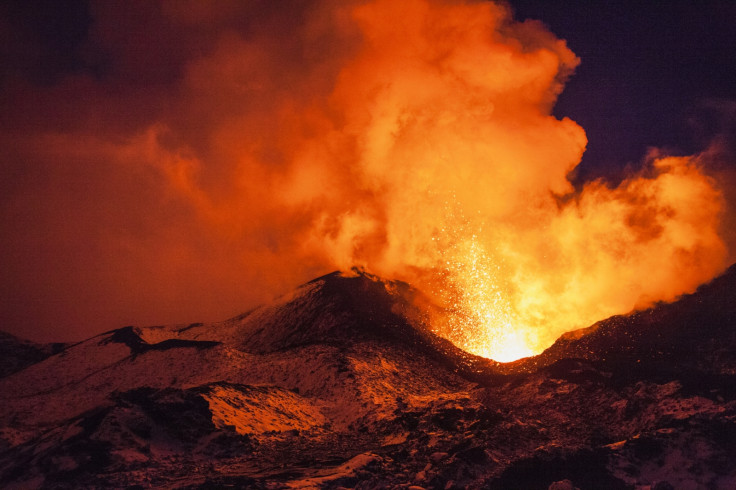Drastic and risky plan to cool the planet may have just got a much safer alternative
Geoengineering scientists say calcite could curb global warming without destroying the ozone layer.

Limiting global warming is one of the major challenges facing the world today. At present, world leaders are focusing on limiting greenhouse gas emissions – however some scientists have proposed a more drastic and risky plan: geoengineering.
Solar geoengineering involves sending chemicals that have a cooling effect into the stratosphere. In doing this, the sunlight would be reflected back into space, instead of warming up the planet.
Most proposals involve the use of sulphur. This is, to an extent, based on the global cooling effect of volcanic eruptions. Explosive eruptions send sulphur dioxide into the air. Droplets of sulphuric acid form when the gas combines with oxygen in the upper atmosphere – and this reflects the sunlight away. In solar geoengineering, scientists suggest we could pump sulphuric acid into the atmosphere to artificially create this effect.
But this plan comes with big risks, one of them being that in doing this, the sulphuric acid could strip away the ozone layer, leaving us (potentially) in a far worse position than we were before. Without the ozone layer protecting us, we would be exposed to ultraviolet light, leading to an increase in skin cancer and eye damage, among other dangers.
A team of scientists from Harvard University have now suggested a slightly different approach – finding a chemical that reflects sunlight and not only shields the ozone layer, but helps repair it.

"In solar geoengineering research, introducing sulfuric acid into the atmosphere has been the only idea that had any serious traction until now," said David Keith, first author of the paper. "This research is a turning point and an important step in analysing and reducing certain risks of solar geoengineering.
The team, writing in the journal PNAS, looked at the different particles that could be used for solar geoengineering and found aerosols that are highly reactive would be more suitable. To stop sulphuric acid from harming the ozone layer, they realised they need particles that would neutralize sulfuric, nitric, and hydrochloric acid on their surface.
As Frank Keutsch, study co-author, said: "Essentially, we ended up with an antacid for the stratosphere. Anytime you introduce even initially unreactive surfaces into the stratosphere, you get reactions that ultimately result in ozone destruction as they are coated with sulfuric acid. Instead of trying to minimize the reactivity of the aerosol, we wanted a material that is highly reactive but in a way that would avoid ozone destruction."
Read more:
Controversial Plan to Slow Global Warming 'Terrifies' Scientist Who Created It
Pumping water onto Antarctica will not stop sea levels rising
Climate Engineering: Blocking out the sun won't fix climate change – but it could buy us time
After using models of stratospheric chemistry, they found calcite – from limestone – could prevent ozone loss while also reflecting sunlight and cooling down the plate. Keith said: "Calcite is one of the most common compounds found in the Earth's crust. The amounts that would be used in a solar geoengineering application are small compared to what's found in surface dust."
However, they are not advocating solar geoengineering as a means of stopping global warming yet. "We really don't know the effects of geoengineering but that is why we're doing this research," Keutsch said.
"Stratospheric chemistry is complicated and we don't understand everything about it," Keith added. "There are ways that this approach could increase global ozone but at the same time, because of the climate dynamics in the Polar Regions, increase the ozone hole."
Concluding, the team wrote: "Although solar geoengineering cannot substitute for emissions cuts, it may supplement them by reducing some of the risks of climate change. Further research on this and similar methods could lead to reductions in risks and improved efficacy of solar geoengineering methods."
© Copyright IBTimes 2025. All rights reserved.






















